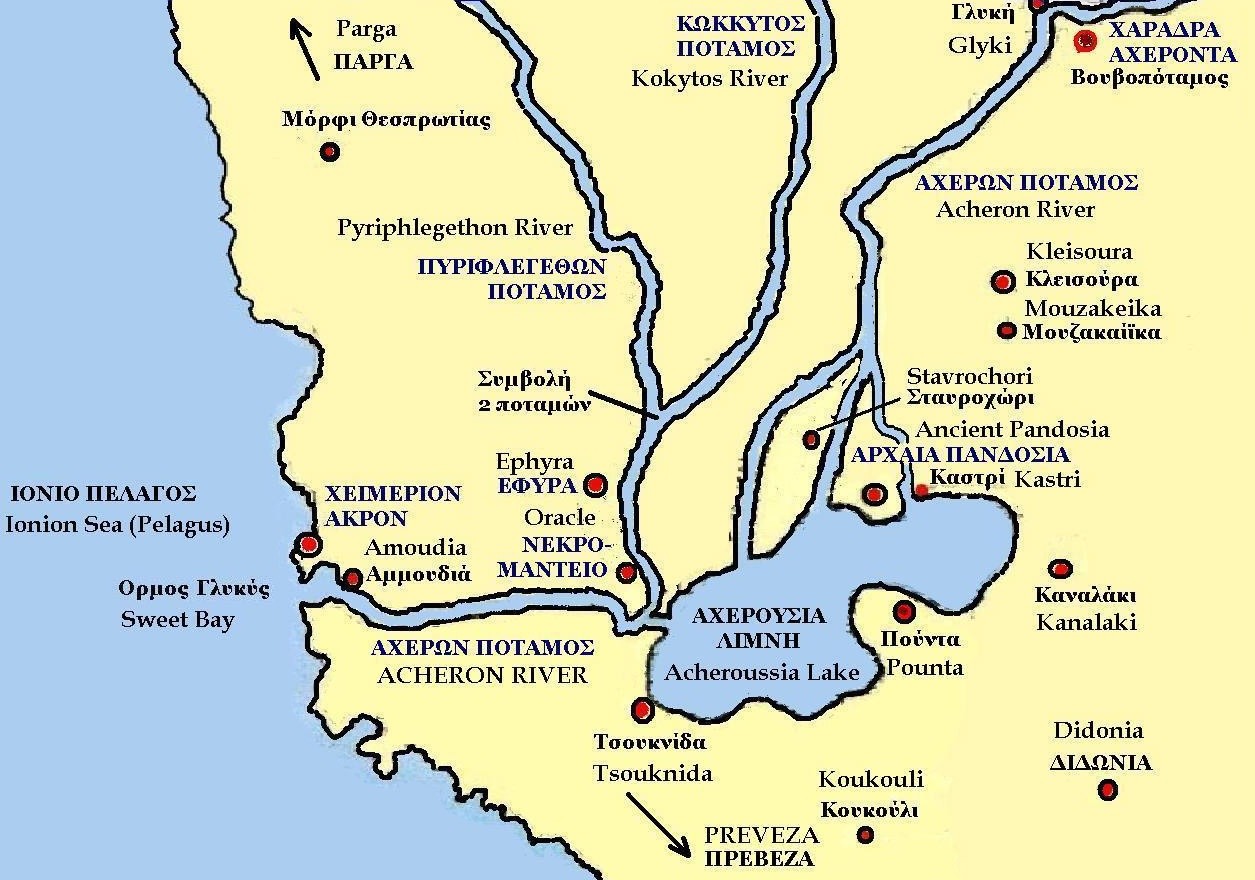I don’t know the answer, but I do know how to read Greek Wikipedia: Αχέρων – Βικιπαίδεια
The Acheron was considered a river of Hades in antiquity. Which makes sense, given that Epirus, where it is located, was nowheresville to the Ancient Greeks. This also exaggerated their sense of its importance: far from being the second greatest river in the world, as Plato claimed in Phaedo (and the greatest was Oceanus itself), the Acheron is only 58 km long.
The Acherusian lake, which the Acheron flowed into, seems to have been associated with much of the spooky stuff by the Ancients, including the gates of Hades. The lake was drained in the 1960s, by the British concern Boots Ltd, and that has changed the flow of the river.

The Acheron in Antiquity

The Acheron now
Haralambos Gouvas, the local who drew the map above, thinks it’s pointless to try to correlate the Homeric geography of the Acheron with its modern geography.
From what I can tell, there are just small villages along the flow of the river. Ammoudia, Preveza (formerly Splantza), at the mouth of the Acheron, has a population of 330. Glyki (Γλυκή Θεσπρωτίας) has a population of 434; Kastri, Thesprotia has 760; Valanidorachi (Βαλανιδόραχη Πρέβεζας) has 334.
The only ancient towns there of note seems to have been Cichyrus/Ephyra and Pandosia (Epirus).